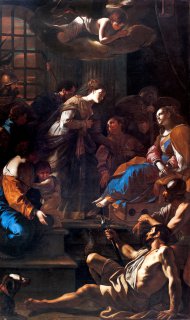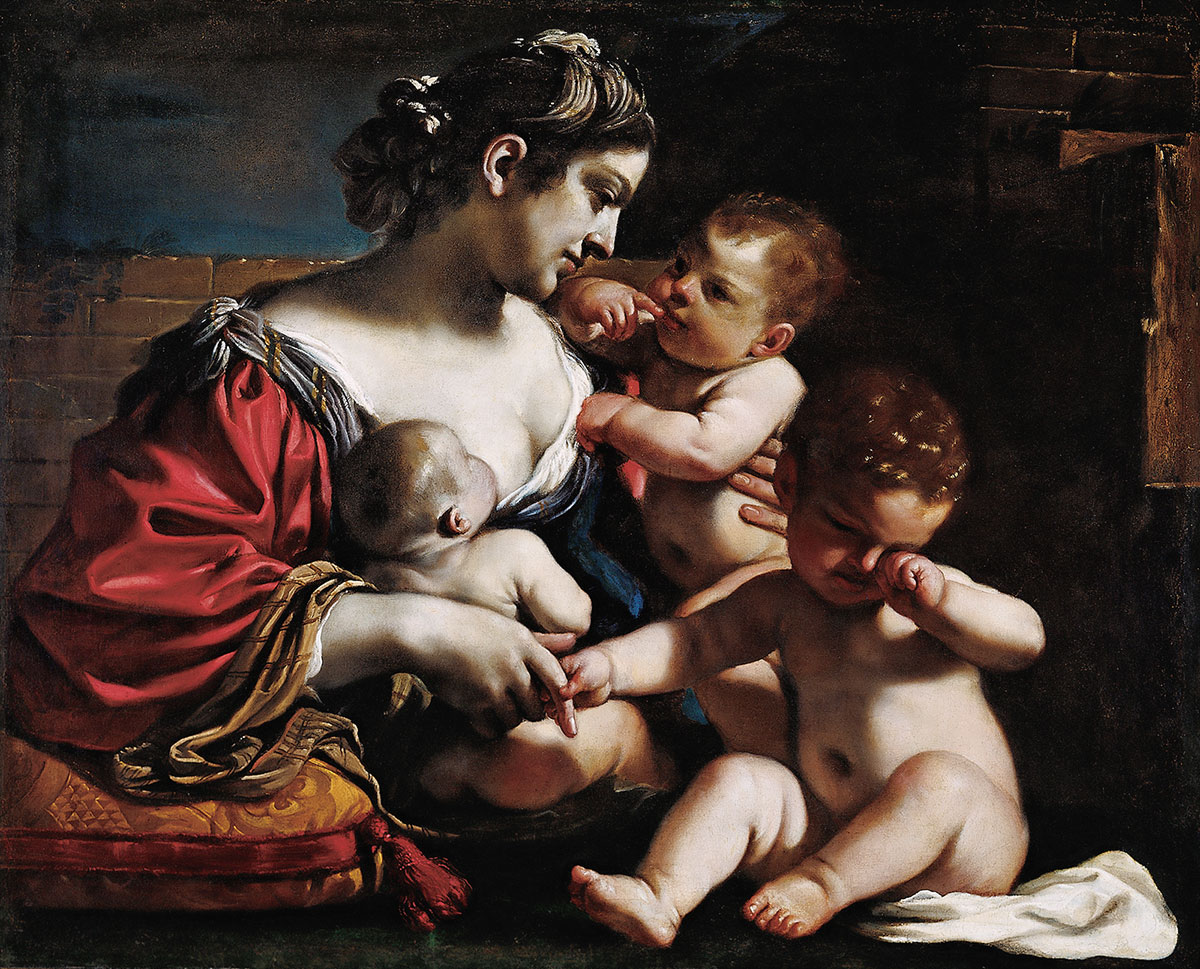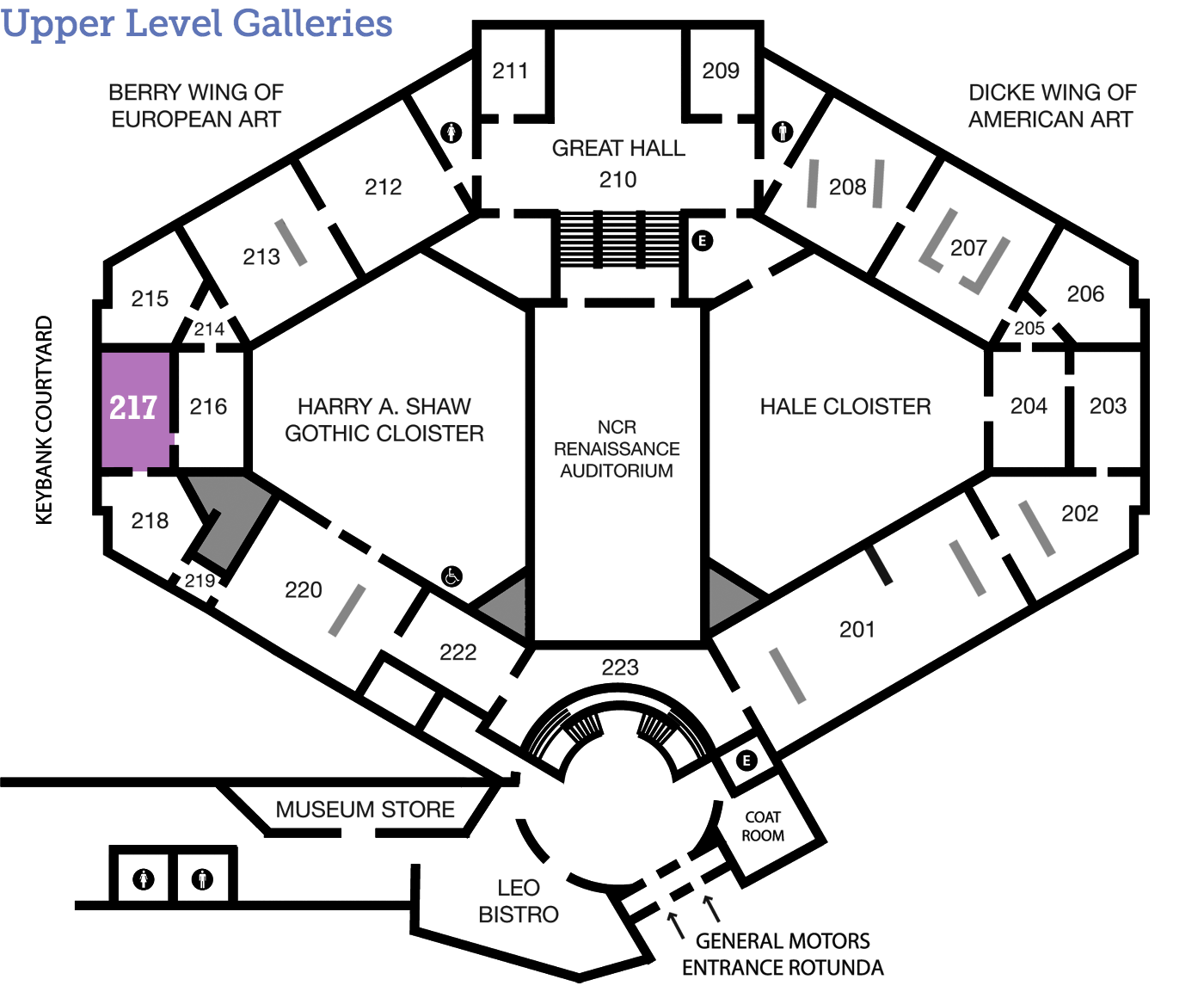
Mattia Preti
The Roman Empress Faustina Visiting St. Catherine of Alexandria in Prison
(1613–1699)
Italian c. 1640–1643 Oil on canvas 167 ½ x 100 inches Gift of Mr. and Mrs. Elton F. MacDonald 1961.108
Overwhelming
This painting is larger than life in many ways: its sheer size, the saint it depicts, and the history of its ownership. The largest painting in The DAI’s collection, it is sure to impress.
A Day in the Life
Tools and Techniques
Behind the Scenes
A Win for Dayton
Shortly after this painting was made it entered the collection of Taddeo Barberini (1603–1647). His uncle, Pope Urban VIII, appointed him to many important positions, including commander of the Papal Army. For centuries this painting remained in the Barberini family and would probably have never left Italy since it was designated a national treasure, but the family was allowed to sell a few artworks after the Italian government acquired the Barberini Palace in Rome.
The National Gallery in London handled the sales and then DAI director Thomas C. Colt, Jr. acquired the painting, succeeding amid larger museums who wanted it. Transporting the painting to Dayton proved a challenge too; it had to be removed from its stretcher, rolled, and stored in a giant cylinder and box. Today, it is the largest and one of the most important paintings in The DAI’s collection.
Look Closer
Performing Faith
Look closer at how light appears in this painting. What does it direct your attention to? Notice how the figures are grouped in ascending stages. These features contribute to the dramatic effect of the painting, filling it with a sense of movement that draws the spectator into the action. This kind of theatrical sensibility marks much of the art made for the Roman Catholic Church in the late 1500s and 1600s.
Throughout Europe in the 1500s the Protestant Reformation challenged the authority of the Catholic Church. Protestants questioned several Catholic teachings and practices, including the veneration of saints and the use of art in church buildings. Awe-inspiring artworks, such as this painting of a popular saint converting a pagan empress, were an effective way to reinforce the Church’s teachings and assert its validity by communicating a sense of grandeur.
Just for Kids
Signs & Symbols
Prison Break
A smart and beautiful woman, political intrigue, and numerous beheadings: the story of St. Catherine of Alexandria reads like a TV melodrama. One of the most popular saints in Christian history, she is renowned for her learning, eloquence, purity, and courage. Tap on the highlighted spots below to learn more about different events in Catherine’s story as it is told in The Golden Legend, a compilation of the lives of saints that was popular throughout Europe for centuries.

Further reading: Jacobus de Voragine, The Golden Legend: Readings on the Saints, translated by William Granger Ryan (Princeton, NJ: Princeton University Press, 2012), 720–727.
Dig Deeper
Arts Intersected
The Sculpture Speaks
Did You Know?
Expert Opinion
A Baroque Masterwork
This is a significant 17th-century Italian painting not only in The DAI’s collection, but in America. What makes it so noteworthy? Here Richard Spear, Italian Baroque art expert and Distinguished Visiting Professor at the University of Maryland, answers this question.
“I consider Preti’s St. Catherine Visited in Prison by the Empress to be one of the most important Neapolitan Baroque pictures in America, for many reasons. One is its sheer size and grandeur—an impressive canvas, indeed, and a very beautiful one. Moreover, it belonged to the Barberini in Rome, arguably the most significant art collectors of their age. It has further historic value because it documents so well Preti’s absorption of Caravaggio’s style, along with Caracciolo’s, Caravaggio’s primary Neapolitan follower; but then it shows Preti’s modifications of that style by way of Bolognese art, notably Guercino’s. It is not only important, then, within Preti’s own development, but for the whole understanding of Neapolitan painting of the seventeenth century. Finally, the iconography is paradigmatic of the Counter-Reformation Church’s interests in charitable acts and works of mercy, not to mention chastity. So, on all accounts it is, for me, one of the masterworks of Italian Baroque painting in this country.”
Note by Richard Spear to The Dayton Art Institute, April 21, 1995
Also in The DAI’s collection is Christian Charity, a painting by one of the artists Spear mentions, Guercino. Notice the dramatic use of light and shadows in both paintings and consider how this contributes to the emotional impact of each.

Guercino (Giovanni Francesco Barbieri) (Italian, 1591–1666), Christian Charity, c. 1625–1626, oil on canvas, 34 ¾ x 43 ¼ inches. Museum purchase with funds provided by Miss Anne Chapman and the Junior League of Dayton, Ohio, Inc., 1958.99.
Look Around
About the Artist
Talk Back
The Eyes of Faith
The pious saint and conversion story depicted in this painting would have encouraged viewers to remain faithful to the Catholic Church during a time of increasing religious and political divisions across Europe. If one does not experience this has the artwork in some sense “failed” to do its job? Nearly 400 years later, is it still possible for paintings like this to inspire devotion? If so, why does it still work? If not, what has changed?

